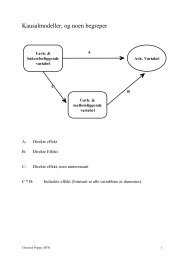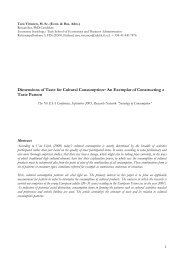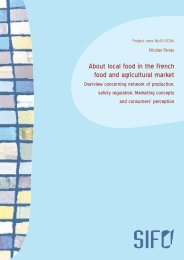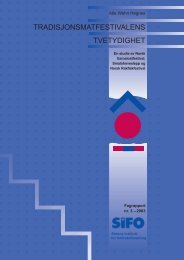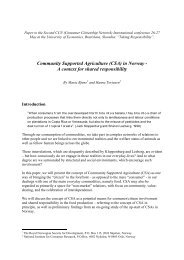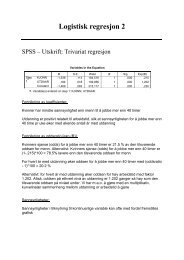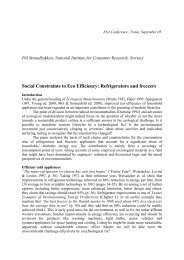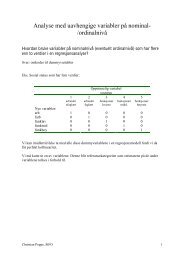Create successful ePaper yourself
Turn your PDF publications into a flip-book with our unique Google optimized e-Paper software.
Summary<br />
The concept of traditional food* seems to be used more and more frequently and in many<br />
very different contexts, by different actors and for different purposes. This report discusses<br />
and gives examples of how the concept of traditional food is used in the specialist literature<br />
and in the Norwegian public debate. It points out that the concept is used without a clear<br />
definition, as if it is a phenomenon everybody implicitly knows what is. It also emerges that<br />
the concept often has a rhetorical function, in that it is used to highlight particular situated<br />
interests and perspectives. Perhaps this is seen most clearly when it is connected with local<br />
communities, industrial and regional interests. On the whole it is associated with something<br />
positive, either through explicit ties to other positive values (local community, healthy food<br />
etc.) or in that the concept is contrasted with facts that are perceived as negative (such as for<br />
instance ”junk food” or industrial food).<br />
In chapter 2 we examine the use of the concept tradition, so that we better understood the<br />
relationship between the two words ”traditional” + ”food” that make up traditional food. Tradition<br />
refers to an established practice that is transferred from generation to generation, or an<br />
internally handed down heritage. The concept is based on two main axis, viz. 1) time and 2)<br />
cultural customs/know-how. These are interwoven in a meaning dimension that emerges in<br />
the connection between time and culture. These mechanisms are driving forces of societal<br />
change and the dynamic process based on the interplay of transfer, innovation and tradition.<br />
After examining the concept of tradition we shift our focus towards the concept of “traditional<br />
food”. Here we look at how the concept is used in different contexts, such as public documents,<br />
in professional cook publications and in the social studies literature. The nutritional<br />
and regional political discurse dominates in the public documents, whereas the cooks are<br />
more concerned with tradition as a source of food specific renewal. The academic debate<br />
reflects the socio-political history and function, with a focus on identity and mobilisation, where<br />
the collective understanding is central.<br />
In chapter 3 we go through the use of the concept more broadly in the media, as it emerges<br />
in national and regional newspapers and in our own research on consumers’ attitudes and<br />
views on these issues. In this context the concept of traditional food is used within competing<br />
and partly overlapping discourses. The concept is used both of preserving the old and of renewing<br />
oneself, about traditional experience based production methods and scientific methods,<br />
about home made food and industrial production, about crafts and generic products. The<br />
contrasts are numerous, but not always irreconcilable. After a long period of a bulk oriented<br />
food market in this country, it may therefore be argued that a return to traditional food can be<br />
perceived as a renewal, as “old future”.<br />
It appears that some actors are more prominent in some discourses than others. Moreover,<br />
actors may from time to time jump from discourse to discourse. This points back to the complexity<br />
of the concept of traditional food. It must always be understood based on concrete<br />
examples and the contextual framework of which it is an integral part. In this chapter we also<br />
present an ideal type portrayal of the different discourses based on different normative interpretative<br />
frameworks connected with traditional food. We distinguish between 1) a preserving<br />
discourse, where traditional food must be the way it always has been, 2) an innovating dis-




